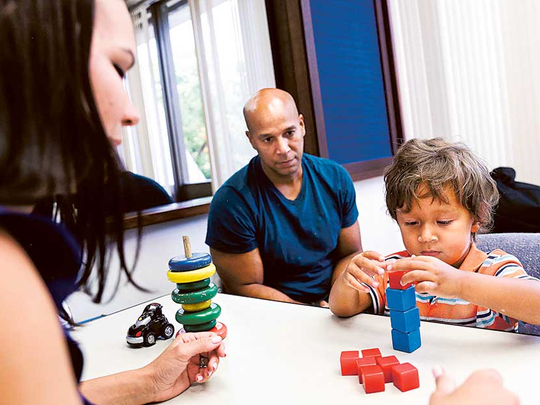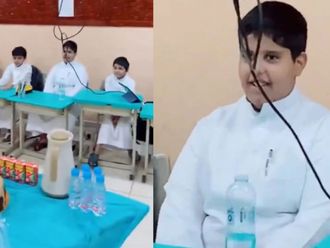
Washington: At least 12 babies in the United States have already been born with the heartbreaking brain damage caused by the Zika virus. And with that number expected to multiply, public health and paediatric specialists are scrambling as they have rarely done to prepare for the lifelong implications of each case.
Many of Zika’s littlest victims, diagnosed with microcephaly and other serious birth defects that might not immediately be apparent, could require care estimated at more than $10 million (Dh36.7 million) through adulthood. Officials who have been concentrating on measures to control and prevent transmission of the virus are now confronting a new challenge, seeking to provide guidance for doctors and others who work with young children with developmental problems.
The White House and Centres for Disease Control and Prevention are holding regular talks with experts and non-profit organisations about the array of services the infants and their families will need well into the future. Advocacy groups are seeking to raise awareness among parents and day-care providers, and some high-risk states are streamlining existing programmes so that they can rapidly connect Zika babies with physical, occupational and other therapies.
The CDC and the American Academy of Paediatrics convened a special meeting in Atlanta to establish guidelines on how to evaluate and care for infants whose mothers were infected with the virus during pregnancy. They heard ophthalmologist Camila Ventura of Brazil, the epicentre of Zika in the Americas, describe how extremely irritable, even inconsolable, the newborns with microcephaly are. “The babies cannot stop crying,” she said.
Just as daunting is the question of how to best monitor those exposed in-utero but without obvious abnormalities at birth. Vision and hearing problems can surface, as can seizure disorders.
“That uncertainty and lack of information will be very stressful for the families,” CDC physician Kate Russell said.
The urgency of these discussions increased after Congress adjourned in mid-July without taking action on additional Zika funding. Lawmakers will not return to Washington until September.
“People have been so focused on prevention,” said Katy Neas of Easter Seals, a non-profit group that provides services to children and adults with disabilities. “Now we’re getting to ‘Holy moly, we’re actually going to have kids here with Zika, and what do we need to do?’ “
Federal and local health officials are monitoring at least 400 pregnant women with Zika in the 50 states and the District, up from 346 a week ago, and another 378 pregnant women in the US territories, most of them in Puerto Rico. In addition to the babies already born with Zika-related problems, at least six women have lost or terminated pregnancies because their foetuses suffered brain defects from the virus.
Should the virus spread, it would be the first outbreak linked to serious birth defects since the 1964 rubella outbreak that killed 2,100 babies and left 20,000 others at risk of deafness, heart damage and microcephaly. “It’s been more than 50 years since we’ve seen an epidemic of birth defects linked to a virus – and never before have we seen this result from a mosquito bite,” said Margaret Honein, chief of CDC’s birth defects branch.
But unlike with rubella, the vast majority of people with Zika have no symptoms. That poses enormous diagnostic challenges because the most accurate tests need to occur within the first two weeks of infection. Also unlike rubella, researchers do not truly know the magnitude of risk for a pregnant woman passing Zika to her foetus.
“This is new territory,” said Anne Schuchat, CDC’s deputy director, with public health officials simultaneously having to learn about Zika’s grave impact on foetuses while devising interventions for the consequences. “We’re trying to prepare ourselves and prepare pregnant women for when those babies are born and what should happen to them.”
In addition to microcephaly, a rare condition usually characterised by an abnormally small head and underdeveloped brain, Zika can cause neurological harm affecting vision, hearing, muscle and bone development, research shows. The range of impairment can be vast. Some babies lack the most basic sucking reflex, which means they might never develop the ability to swallow.
Subtle changes
Even in babies who look “absolutely fine” at birth, ongoing screening may be necessary to detect subtle changes that could signal serious problems. Abnormal movement and prolonged staring, for example, could indicate an emerging seizure disorder.
“You have to really follow them and check,” explained V. Fan Tait, deputy director of child health and wellness for the American Academy of Paediatrics. “What do you need to do for the evaluation, and who else needs to be involved? We know the worst-case scenario, but what we don’t know is the continuum.”
Although the paediatric neurologist acknowledged that it is unclear how many children could be affected, “in my mind, it will stretch the system that we have to care for them”, she said.
Federal law requires every state to have an early intervention programme that offers services to eligible infants and toddlers up to 36 months old who have significant developmental delays or conditions likely to result in such delays.
“We’re anticipating this is going to be a major problem,” said Charles Bauer, a professor of paediatrics and neonatology at the University of Miami Mailman Centre for Child Development. The university runs one of the state’s 15 Early Steps programmes, and its paediatricians, psychologists and other specialists see more than 3,500 infants and toddlers a year.
In confronting a disease that has no treatment, experts said it may take years to fully grasp the damage Zika does over a child’s lifetime.
“We’re at the beginning of the process of discovery. We’re going to find out more and more unsettling issues about this virus,” said Irwin Redlener, a Columbia University public health professor and president of the Children’s Health Fund, which assists disadvantaged children.












